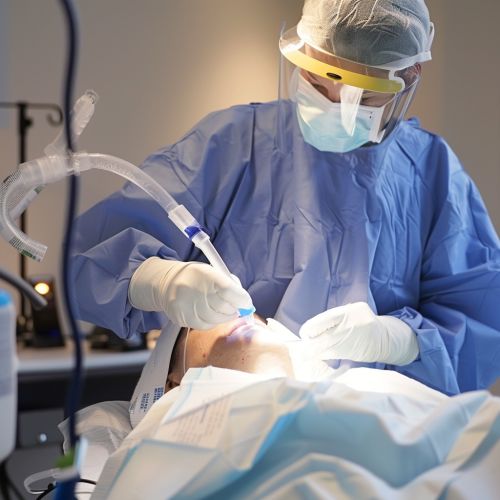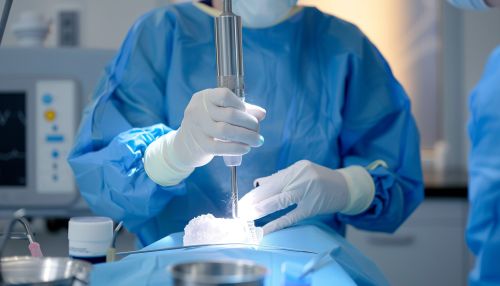Cryosurgery
Overview
Cryosurgery is a type of surgery that involves the use of extreme cold to destroy abnormal tissues in the body. This surgical method is often used to treat a variety of diseases and disorders, most commonly those involving the skin and eye. Cryosurgery is also used in the treatment of some types of cancers and precancerous or noncancerous growths.


History
The use of cold temperatures in medicine has been recorded as far back as the 17th century, but the modern use of cryosurgery developed in the mid-20th century with the advent of liquid nitrogen. The first reported application of cryosurgery was by James Arnott in 1845. He applied salt solutions at sub-zero temperatures to treat various types of skin lesions.
Procedure
Cryosurgery is performed using a cryoprobe, a wand-like device that delivers a stream of liquid nitrogen or argon gas to freeze the targeted tissue. The procedure can be performed under local or general anesthesia, depending on the location and size of the tissue being treated. The freezing process kills the cells by forming ice crystals inside the cells, disrupting their function and structure. After the procedure, the frozen tissue thaws and is either naturally absorbed by the body, or it dissolves and forms a scab that is later shed.
Applications
Cryosurgery is used in a wide range of medical applications. It is often used to treat skin conditions such as warts, moles, skin tags, and solar keratoses. In ophthalmology, cryosurgery is used to treat a variety of conditions, including retinoblastoma, a type of eye cancer. Cryosurgery can also be used to treat internal disorders and cancers. For example, it is used to treat liver diseases and cancers by freezing the cancerous tissue and allowing it to slowly dissolve over time.
Advantages and Disadvantages
Cryosurgery has several advantages over traditional surgery. It is less invasive, often resulting in less pain, less scarring, and shorter recovery times. It can also be performed on patients who are not good candidates for traditional surgery due to age or other health conditions. However, cryosurgery also has its disadvantages. It can be difficult to control the spread of the freezing effect, which can lead to damage to nearby healthy tissue. Additionally, the long-term effectiveness of cryosurgery is not as well-established as traditional surgery for many conditions.
Future Developments
The field of cryosurgery continues to evolve with advancements in technology and technique. One area of ongoing research is the development of more precise cryoprobes and better imaging techniques to guide the cryosurgery. This could potentially increase the effectiveness of the treatment and reduce the risk of damage to surrounding tissues.
